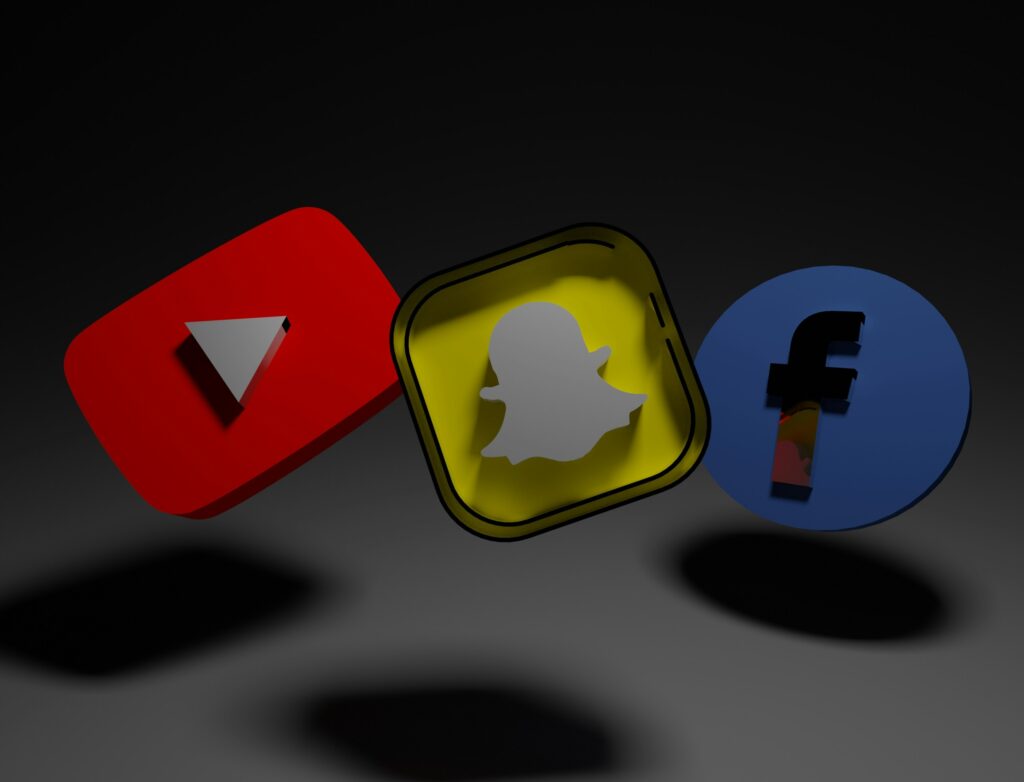Why Multi-Platform Matters More Than Ever
Audiences aren’t just in one place anymore. They’re spread across TikTok, YouTube, Instagram, LinkedIn, Facebook—and each has its own vibe, its own format, and its own rules. Some people scroll for entertainment, others for education, inspiration, or escape. That makes chasing reach on just one platform a losing game. If you want to grow, you’ve got to go where your audience goes, not where you’re most comfortable.
What worked on YouTube might fall flat on TikTok. Copy-pasting doesn’t cut it. Instead, you’ve got to reshape your content to fit each ecosystem. That means tweaking your message, structure, tone—even how you open a video or crop a frame.
Adaptability isn’t a side skill anymore. It’s the only way to stay visible. The creators thriving in 2024 aren’t just posting everywhere—they’re thinking in layers, turning one idea into five agile formats. Multi-platform isn’t double the work. It’s smarter work.
Know the Platform, Know the Rules
Creating once and blindly cross-posting doesn’t cut it anymore. Each platform has its own language, pace, and expectations. If you want your content to land, you need to speak fluently in each ecosystem.
Instagram is built for visual punch. Clean imagery, punchy captions, and audio trends lead the way. It’s where aesthetics meet immediacy. Lean into short copy, use trending sounds, and keep visuals sharp. Reels are hot, but don’t sleep on Stories or carousel posts—each format plays a different role.
YouTube still rewards depth. If you’re not planning out your content with a beginning, middle, and end, you’re sunk. Strong, clear thumbnails pull people in, while a narrative arc keeps them watching. Think evergreen value or powerful storytelling. It’s less about fast hits and more about retention and searchability.
TikTok is chaos—but calculated. You need to hook viewers in the first 2–3 seconds. Trends rule the feed, and vertical, full-screen moments hold attention. Content doesn’t need to be perfect, but it does need to be fast, raw, and reactive. Cultural fluency wins here.
LinkedIn runs on clarity and credibility. This isn’t the place for flashy cuts or dance challenges. Share lessons, frameworks, professional stories. Long-form text works, but only if it teaches, inspires, or unlocks new thinking. Think signal over noise.
Facebook is personal and tribal. Group engagement, shares among friends, and nostalgia-heavy posts get the most reach. It’s a slower ecosystem, but still potent—especially if you’re tapping into tight-knit communities or long-standing connections.
To figure out what sticks on each platform, go tactical. Study top creators. Pay attention to what’s getting shared—not just viewed. Check trending sections inside creator dashboards. Dissect what high-performing posts share in rhythm, visuals, and copy. Reverse engineering isn’t stealing—it’s survival. Treat it like reconnaissance, then execute with your own tone. That’s how you stay visible without losing your voice.
Core Strategy: Start With a Flexible Content Pillar
One good piece of content can go a long way—if it’s built right. Don’t start with scraps. Start with substance. Whether it’s a sharp video essay, a thoughtful blog post, a well-produced interview, or a punchy webinar, build a high-quality asset that has legs.
Then, repurpose with intent. This isn’t about cutting random clips and blasting them everywhere. It’s about planning upfront. That ten-minute YouTube video? Break it into 30-second reels for Instagram and TikTok. Pull out strong statements and data points for a carousel post. Use the full version on YouTube to drive deeper engagement. And if there’s a takeaway with business value, shape it into a mini thought post for LinkedIn.
Each platform gets what it responds to best—but it all starts from one solid core. Think of it like a tree: strong trunk, flexible branches. Don’t cut corners. Cut smart.
Format, Voice, and Timing Tweaks That Matter
Short-form is still the fastest way to catch attention—but that doesn’t mean it’s shallow. Creators who win at this know how to pack value in tight spaces. Whether it’s a 15-second tip, a punchy opinion, or a scroll-stopping visual, the trick is making every second count. Depth isn’t about length. It’s about clarity.
Voice shifts depending on where you’re posting. TikTok favors off-the-cuff, chatty energy. LinkedIn wants you buttoned up and thoughtful. It doesn’t mean you have to put on a different face for each app—but it does mean adapting your tone so it fits the vibe and expectations of the space. One-size-fits-all doesn’t fly here.
Little things matter too. Captions and subtitles aren’t just accessibility add-ons—they’re engagement tools. Same with ratios and layouts. Does your post look native to the feed, or like it was awkwardly copy-pasted from somewhere else? Format it right, or risk losing viewers in the scroll.
Last piece: timing. Not all hours are equal. Posting when your audience is actually online can mean the difference between 50 views and 50,000. Use insights, not guesses. Watch when your community shows up and build your release schedule around those patterns.
Efficiency Without Losing Quality
Content volume alone won’t keep you in the game—efficiency has to meet quality. In 2024, smart creators aren’t just pushing out more, they’re building pipelines. Tools like Descript, CapCut, and Adobe Express are trimming hours off editing and auto-resizing. Batch your shoots, then let automation do the grunt work.
But here’s the line: not every clip needs a handcrafted cut, and not every platform deserves an afterthought. The key is building repeatable workflows—templates, presets, naming systems—that let you stay fast without looking generic. Drop in B-roll, adjust for aspect ratio, hit export. Minimum effort, max polish.
Know when to get custom. YouTube thumbnails? Go manual. A TikTok reaction edit? Let the AI cut it. But your landing video on LinkedIn? Worth crafting from scratch. The goal isn’t to do everything perfectly—it’s to do the important things intentionally, at scale.
Case Study: A Successful Multi-Platform Rollout
In Q1 2024, creator Dani Reyes—known for her no-fluff career advice and weekly video tips—ran a campaign built around a single topic: “Breaking into Tech Without a Degree.” The core pillar was a 12-minute YouTube video that featured interviews, personal experience, and a concise action plan.
But Dani didn’t stop there. She broke the content down across four platforms—each version tailored:
- TikTok: Three 30-second clips featuring snappy, high-impact quotes and fast-paced edits + trending audio overlays. Hook came in fast: “You don’t need a Stanford degree to land a six-figure role.”
- Instagram Reels & Carousels: Behind-the-scenes snippets, styled Q&A overlays from the video, and an Instagram carousel listing five action steps. Visuals were clean, on-brand, and geared for thumbs.
- LinkedIn: Trimmed-down insights framed for professionals—think: stats, commentary, and a punchy personal story that invited engagement. Tone was more refined, less kinetic.
- YouTube Shorts: A powerful quote and AI-powered animation summarizing the video’s core message. Purpose: funnel back to the long-form post.
The Numbers (First 30 Days)
- YouTube long-form: 78K views / 6.1K subs gained / 9% conversion to email signup
- TikTok: 412K views total across clips / 22K new followers / 600+ saves
- Instagram: 180K Reels views / 3.4K shares / 9.5K carousel likes
- LinkedIn: 14K impressions / 760 reactions / 94 direct DMs on follow-up inquiries
What Worked—and What Didn’t
- Wins: Platform-native positioning worked magic. Each version spoke the language of its platform while keeping brand voice intact.
- Lesson: Her team underestimated LinkedIn’s power—one post drove a serious uptick in leads. Conversely, Instagram’s carousel outperformed its Reel in saves and shares.
- Watch Out: What failed? Initial TikTok post bombed with corporate jargon. She re-shot it, dropped the buzzwords, and it took off.
Key takeaway: the more surgically you tweak for the platform, the better your results. It’s not enough to show up—you have to speak the dialect.
Balancing Consistency with Platform Culture
Your Voice is Your Anchor
One of the most important parts of adapting your content for multiple platforms is maintaining a steady brand voice. Whether you’re relaxed and funny or professional and insightful, your tone is part of your identity. It builds trust and helps audiences recognize you, no matter where they’re watching or reading.
- Define your consistent tone—this doesn’t change from platform to platform
- Use visual identity (fonts, colors, editing style) to reinforce alignment
- Think of your voice as the constant, even as your format flexes
Adapt the Shape, Not the Soul
Adaptation is not replication. Audiences on each platform expect different types of content. What works on TikTok won’t necessarily resonate on LinkedIn, even if the core message stays the same.
- Reshape content to feel native to each platform
- Repurpose with intention—not just cutting and pasting across channels
- Pay attention to dimensions, pacing, and platform-specific features
Don’t Be a Copy-Paste Bot
Audiences can instantly spot content that doesn’t belong. If your video’s tone screams TikTok but it’s posted on LinkedIn without any adjustments, it risks being ignored—or worse, unfollowed.
- Avoid sharing identical captions across platforms
- Customize intros and call-to-actions to feel platform-native
- A/B test different formats to see what resonates where
Engage on Their Terms
Platform-native engagement is just as important as content distribution. Meaningful interaction can boost visibility, increase trust, and build community.
- Join the conversation with relevant hashtags, comment threads, and duets (where applicable)
- Respond to comments natively and timely
- Use polls, questions, or stories to invite responses and build two-way interaction
Stay Focused Amid Distractions
Trends come and go quickly, but not every trend deserves your time. To maintain relevance without losing purpose, align your trend participation with your content strategy.
- Know when a trend fits your brand—and when it doesn’t
- Stay observant, but don’t chase every viral moment
- Keep your content aligned with your long-term goals
Staying consistent in voice while flexible in execution is the key to thriving in a multi-platform world. Done right, it shows you understand your audience—and respect their experience across channels.
Long-Term Wins: Building Durable Engagement
Cross-promotion can be a growth engine—or a total eyesore. Done right, it feels seamless. A reel sends viewers to a YouTube breakdown. A LinkedIn post hints at a full podcast. The key is platform-native language and pacing. Don’t blast the same caption everywhere. Don’t link-dump. Earn the click.
Done wrong, cross-promotion turns into noise. If you’re flooding every feed with the same asset, you’re not marketing—you’re recycling. Each platform has its own rhythm. Respect that, or you’re just adding clutter.
Now let’s talk algorithm-friendly design. It’s not just about good content. It’s about how you architect it. Clean thumbnails, punchy titles, captions that pop in silence—these are the small details that help you ride the wave instead of floating under it. Platforms reward polish that doesn’t feel staged.
Most of all, creators who are really winning aren’t just creators—they’re operators. They think distribution first. They have systems, calendars, contingencies. They track what’s working across channels, and iterate. They’re not making content for fun—they’re programming a media ecosystem around their voice.
For a deeper look into content that actually moves, see Crafting Compelling Content: Tips for Success.
Final Notes
Treat adaptability like your new SEO—because that’s what it is now. Keywords still matter, sure, but catching and holding attention is the real currency across platforms. That means understanding what your audience wants to consume, how they scroll, and what makes them pause. You’re not just optimizing for search anymore—you’re optimizing for instinct, behavior, and speed.
Posting often helps, but let’s be clear: if it’s fluff, it fades fast. A lean, thoughtful post once a week can out-perform five low-quality uploads. Value beats volume. Every platform amplifies content that holds people’s attention longer and sparks action—even if it’s just a save or share.
When it comes to distribution, don’t lazily stretch the same post across different platforms and call it a strategy. The message should travel well, yes—but not feel mass-produced. Ask yourself: is this short enough for TikTok? Is this styled right for LinkedIn? Can this quote stand on its own in a carousel? Adapt smartly. Your ideas should move, not dilute.



